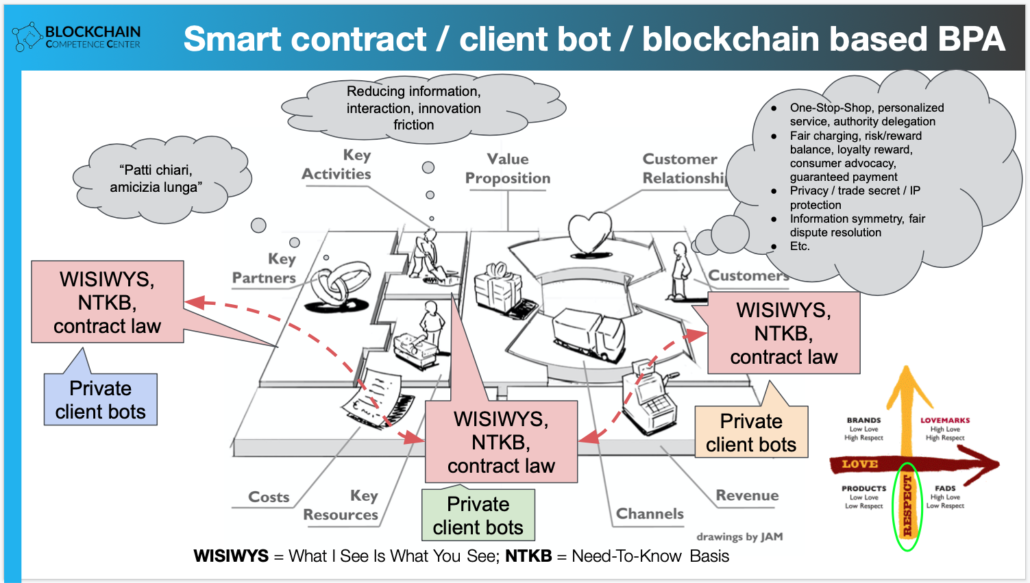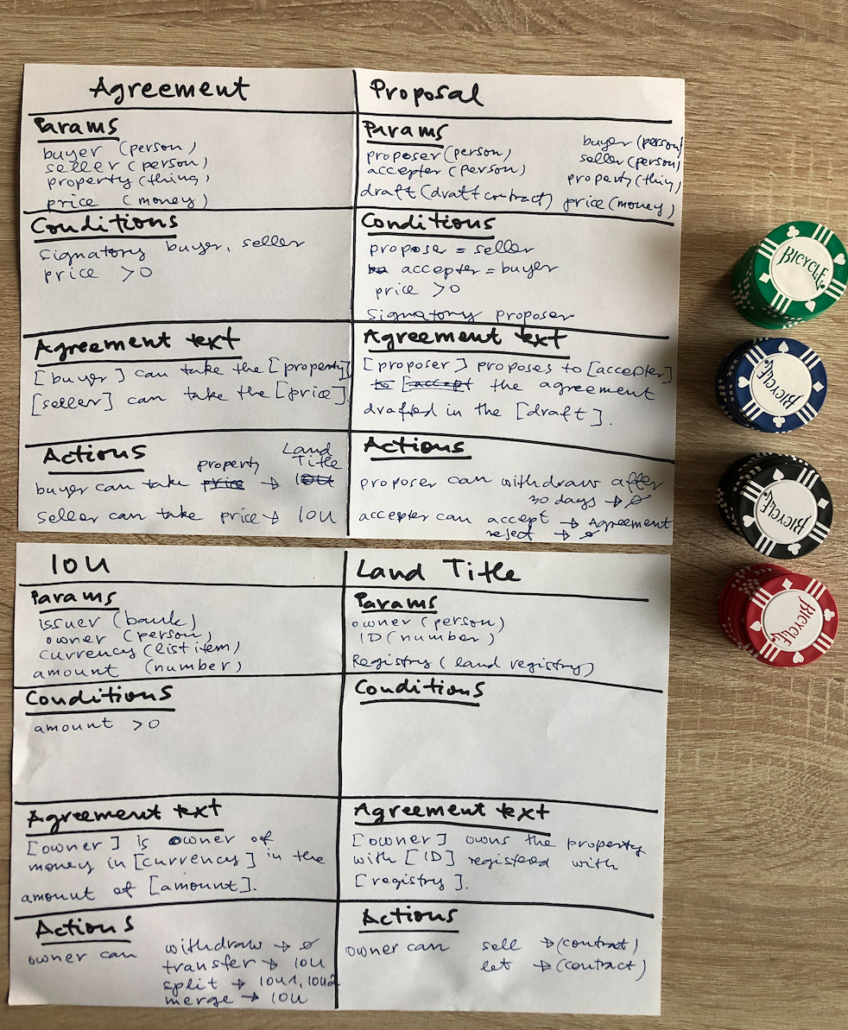How Daml helps the Chief Customer Respect Officer — and other CxOs too
The views expressed in this blog post are mine. They do not represent the official view of either Digital Asset — developers of Daml — , or Blockchain Competence Center, where I am Chief Product Officer.
If management teams were structured around the needs of key stakeholder groups, they had a Chief Customer Love Officer (CCLO), a Chief Customer Respect Officer (CCRO), a Chief Partner Happiness Officer (CPHO; partners including employees as well as vendors), and of course a Chief Investor Happiness Officer (CIHO).
The domains of the CCLO and the CCRO, that is Customer Love and Customer Respect, align with the two dimensions of customer engagement, according to the Lovemarks model:

The inventor of the model, Kevin Roberts did a great job in separating these two dimensions, which require very different mindsets on the supply side of the business model, in spite of being hardly distinguishable in the eyes of the customers.
The Lovemarks model explains why it’s mission impossible to spark Customer Love with high technology: it comes only from high touch interactions, which stimulate Mystery, Sensuality, and Intimacy.
On the other hand, Customer Respect — which consists of reliable service, transparent pricing and fair dispute resolution among other things, and all these even in the case when contributions of different service providers/vendors are combined — is very much the domain of technology in general, and Smart contract/Trigger /(Maybe blockchain)* based Business Process Automation in particular.
*This is an insider joke for Daml /Haskell programmers, who know how to use the polymorphic Optional/Maybe type; if you want to join the club of the initiated, check out the Daml documentation.
By the latter, I mean more or less the same as what is called by the creators of Daml and its synchronization protocol, the interoperability solution being developed by Digital Asset to enable atomic transactions across Daml driven ledgers.
I use the following one-pager — hijacking the famous Business Model Canvas — to illustrate how such a shared synchronization/automation layer supports Customer Respect and to a certain degree Partner Happiness:

The drawing was inspired not only by Daml and its synchronization protocol. I also find very enlightening the articles of Corda CTO Richard Gendall Brown, from whom I borrowed the WISIWYS acronym. The “contract law” part refers to a crucial concept of the Daml smart contract language and execution platform: it follows the principles of contract law by implementing a hierarchically atomic transaction authorization mechanism (under the hood making good use of monads in Haskell, which underpins the Daml smart contract language).
I have highlighted the private bot function of the platform, which is a powerful complement to the enforcement of common rules by the smart contracts. (Private bots can be run on the client platforms communicating with the shared ledger, but also on the Daml platform itself through its new Triggers feature. A trigger is a bot, which listens to events on a set of contract templates and reacts to them.)
Being a one-pager, the slide is dense, so the Customer Respect benefits in the bubble might be difficult to read, so I repeat here the list, grouped related items:
- One-Stop-Shop, personalized service, delegating authority
- Fair charging, risk/reward balance, loyalty reward, consumer advocacy, guaranteed payment
- Privacy / trade secret / IP protection
Information symmetry, fair dispute resolution - Etc.
The fact that I have focused so far on how the shared synchronization/automation platform helps the CCRO by promoting Customer Respect, doesn’t mean that the domains of the other CxOs don’t benefit from it.
Partnership Happiness (again, partners include employees as well as vendors) is promoted by fostering a relationship that can be described by the Italian quip “patti chiari, amicizia lunga” — or in less melodic English translation “clear agreements, long friendship”. It also reduces three types of market friction, described by the IBM-sponsored Blockchain for dummies booklet: Information, Interaction, and Innovation friction.
A special kind of partnership, the collaboration between IT and business experts — by all accounts, one of the key success criteria of business-related IT projects — is supported nicely by Daml, which is very much a “Ubiquitous Language” not just supporting the right naming of objects but the hands-on demonstrating of the semantics of them by scenario testing and contract template package visualization.
I also use hand-written contract templates and poker chips in workshops. Analog tools that can be passed around inspire thinking immensely.

The Chief Customer Love Officer is an indirect beneficiary of high Customer Respect: she can rest assured that her hard work around Customer Love is not ruined by petty annoyances.
And lastly but certainly not least importantly: if all the other CxOs are performing well— and the platform costs remain within a reasonable budget, which is very much doable — the bottom line cannot suffer. Which also makes the Chief Investor Happiness Officer happier.
